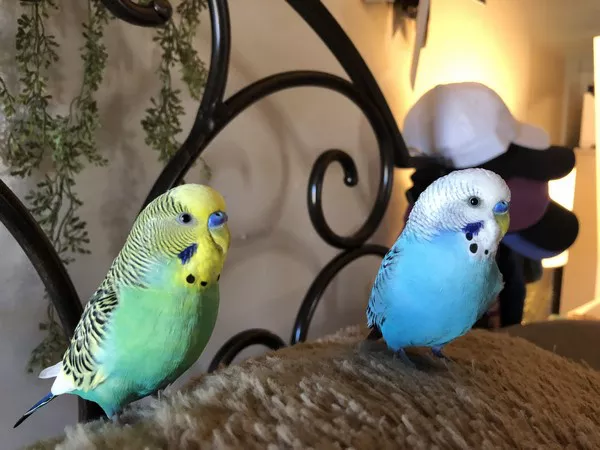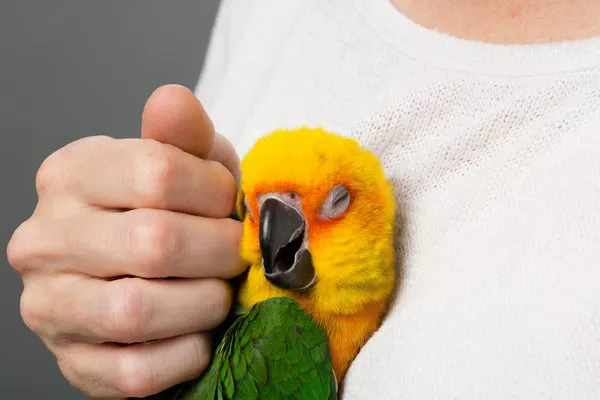The corn snake (Pantherophis guttatus) is a popular choice among reptile enthusiasts, known for its vibrant colors, manageable size, and generally docile nature. Native to the southeastern United States, this species has been bred extensively in captivity, resulting in a wide array of color and pattern morphs. This article explores the characteristics of corn snakes, their living habits, and identifies the most common morphs within the species.
The Corn Snake: Species Characteristics and Natural History
Corn snakes, often referred to as Pantherophis guttatus, are a non-venomous colubrid species. They are named for the distinctive pattern of scales on their bodies, which resembles the appearance of corn kernels. These snakes are recognized for their slender bodies, large eyes, and smooth, shiny scales that come in various colors and patterns.
Physical Description: Adult corn snakes typically range from 3 to 5 feet in length, with some individuals reaching up to 6 feet. Their bodies are cylindrical and covered in smooth, keeled scales that help them move efficiently through their natural habitats. Corn snakes have a distinctive color pattern that can vary widely depending on the morph. In the wild, they are usually orange or reddish with black-bordered blotches, but captive breeding has introduced a myriad of color variations.
Habitat and Distribution: In the wild, corn snakes are found in a variety of habitats, including grasslands, woodlands, and agricultural areas. They are particularly adept at hiding in leaf litter, under logs, and in abandoned burrows. Corn snakes are primarily terrestrial but are known to climb and swim when necessary. Their ability to adapt to diverse environments has contributed to their success as both wild and captive species.
Diet and Behavior: Corn snakes are constrictors, meaning they kill their prey by wrapping around it and squeezing until it suffocates. In the wild, their diet mainly consists of small mammals, birds, and reptiles. In captivity, they are typically fed pre-killed rodents. Corn snakes are known for their gentle temperament and are relatively easy to handle, making them an excellent choice for both beginner and experienced reptile keepers.
Reproduction: Corn snakes are oviparous, meaning they lay eggs rather than giving birth to live young. Females usually lay between 10 to 30 eggs per clutch, which they incubate for about 60 to 65 days. The hatchlings are miniature versions of the adults, with the same color and pattern variations that will continue to develop as they grow.
Understanding Morphs: The Genetic Variations of Corn Snakes
In captive breeding, a “morph” refers to a genetic variation that affects the snake‘s color, pattern, or scale texture. Morphs are created through selective breeding and can result in a wide range of appearances. Each morph is a result of specific genetic combinations that produce distinct visual traits.
Common Corn Snake Morphs:
Among the many corn snake morphs, a few have gained widespread popularity due to their striking appearances and relatively stable genetic traits. These morphs are frequently seen in both pet trade and breeding programs.
Normal or Wild-Type Morph: This is the original color pattern of corn snakes, characterized by a reddish or orange base color with black-bordered blotches. This morph is commonly found in the wild and remains one of the most popular choices for beginners due to its classic appearance and ease of care.
Amel (Anerythristic Melanistic): The Amel morph is one of the most popular and recognizable corn snake morphs. It is characterized by a loss of the red pigment in the snake’s coloration, resulting in a range of colors from pale yellow to orange with lighter, almost white, patterns. This morph is known for its vibrant, clean appearance and has become a staple in captive breeding programs.
Snow Morph: The Snow morph is a combination of the Amel and Anerythristic traits, resulting in a snake with a pale, almost white body with subtle patterning. The Snow morph is highly prized for its striking appearance, which is both unique and visually appealing. This morph can range from very light to a soft pinkish-white.
Ghost Morph: The Ghost morph is a result of combining the Amel and Anerythristic genes with the Hypomelanistic gene, which reduces the amount of black pigment in the snake’s body. This results in a snake with a more subdued, ghostly appearance, characterized by a pale, washed-out color with subtle, yet distinct, patterning.
Hypo (Hypomelanistic): The Hypo morph is known for its reduced black pigmentation, which results in a snake with brighter, more vibrant colors. This morph is often used in combination with other morphs to create a range of visually appealing patterns and colors.
Butter Morph: The Butter morph is a color variation that results in a rich, buttery yellow coloration with darker, contrasting patterns. This morph is popular for its warm, golden hues and is often used in breeding programs to enhance color diversity.
Okeetee Morph: The Okeetee morph is named after a region in South Carolina where these distinctive corn snakes are found. They are known for their bold, bright orange coloration and contrasting black patterns. The Okeetee morph is highly sought after for its vivid and striking appearance.
Bloodred Morph: The Bloodred morph is characterized by a deep, rich red coloration with minimal patterning. This morph is highly valued for its intense color and smooth appearance, making it a favorite among collectors and breeders.
Scaleless Morph: The Scaleless morph is a relatively new and unique variation characterized by the absence of scales, resulting in a smooth, almost naked appearance. This morph is the result of a genetic mutation and is highly prized for its rarity and distinct look.
The Popularity and Market of Corn Snake Morphs
The diversity of corn snake morphs has made them a popular choice among reptile enthusiasts and breeders. The wide range of colors and patterns allows for personalization and customization, making corn snakes an appealing pet for many different preferences.
Breeding and Market Trends: The popularity of specific morphs can vary based on market trends and breeder preferences. Morphs like the Amel, Snow, and Hypo are consistently in high demand due to their striking appearances and stable genetic traits. Newer morphs, such as the Scaleless, continue to capture the interest of advanced breeders and collectors due to their unique and novel characteristics.
See Also: What Is the Most Popular Corn Snake Morph?
Ethical Considerations: While breeding corn snakes for specific morphs can be a rewarding and enjoyable endeavor, it’s important for breeders and buyers to consider the ethical implications of their practices. Responsible breeding involves ensuring the health and well-being of the animals, as well as avoiding practices that could lead to genetic defects or health issues. Reputable breeders should prioritize the health and genetic diversity of their snakes, and potential buyers should seek out reputable sources to ensure they are purchasing healthy, well-cared-for animals.
Care and Husbandry of Corn Snake Morphs
Regardless of the morph, all corn snakes require similar care and husbandry to ensure their health and well-being. Providing appropriate housing, diet, and handling practices is essential for maintaining a healthy and happy corn snake.
Housing: Corn snakes need a secure and appropriately sized enclosure to thrive. A terrarium or snake habitat with a secure lid is ideal, as corn snakes are known for their escape artist tendencies. The enclosure should provide ample space for the snake to move, climb, and hide. Substrate options such as aspen bedding or reptile carpet are commonly used, and it’s important to provide hiding spots and climbing structures to mimic their natural habitat.
Temperature and Humidity: Maintaining proper temperature and humidity levels is crucial for the health of corn snakes. A temperature gradient within the enclosure, with a warm side and a cooler side, allows the snake to regulate its body temperature. The warm side should be kept between 80 to 85 degrees Fahrenheit, while the cooler side should be around 70 to 75 degrees Fahrenheit. Humidity levels should be monitored and kept at a moderate level, typically between 40 to 60 percent, to prevent shedding issues and promote overall health.
Diet and Feeding: Corn snakes are carnivorous and require a diet of appropriately sized prey, typically rodents, such as mice or rats. Pre-killed prey is recommended to reduce the risk of injury to the snake. Feeding should be done every 5 to 7 days for juveniles and every 7 to 10 days for adults. It’s important to monitor the snake’s weight and adjust the feeding schedule as needed to ensure proper growth and health.
Handling and Socialization: Corn snakes are generally docile and easy to handle, making them a great choice for beginners. Regular handling can help to socialize the snake and reduce stress. However, it’s important to handle corn snakes gently and avoid sudden movements that could startle them. Regular handling also provides an opportunity to check for any signs of health issues or abnormalities.
Health Considerations: Regular veterinary check-ups are important for monitoring the health of corn snakes. Common health issues include respiratory infections, parasites, and shedding problems. Maintaining proper husbandry and hygiene practices can help prevent many of these issues. If any signs of illness or distress are observed, prompt veterinary attention should be sought.
Conclusion:
In conclusion, corn snakes are a fascinating and diverse species with a wide array of morphs that cater to various preferences and interests. The most common corn snake morphs, including the Normal, Amel, Snow, Ghost, Hypo, Butter, Okeetee, Bloodred, and Scaleless, each offer unique and striking appearances that make them popular among reptile enthusiasts.
Understanding the characteristics of these morphs and their care requirements is essential for prospective owners and breeders. Whether you are drawn to the classic Wild-Type coloration or intrigued by the more recent Scaleless morph, corn snakes offer a variety of options to suit different tastes and preferences. By providing appropriate care and considering ethical breeding practices, enthusiasts can enjoy the beauty and charm of these remarkable reptiles for years to come.
Related Topics:

























